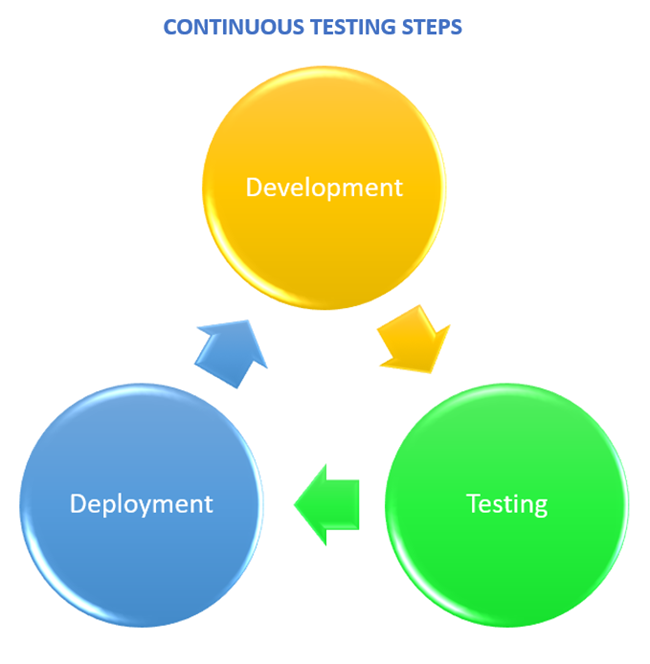
4 Best Practices to Implement Continuous Web Application Testing
Web automation testing is a term that is used to denote the use of test automation tools to test the performance of a website or web application. There are different types of applications and web applications are one of them. There are many reasons why businesses need to have a web application in addition to a mobile application, and the reasonable cost is one of them. Here are some key benefits offered by web applications:

Benefits of Web Applications
- Cost Effective
- No need for space on hard drive
- Need for less support from developer
- Runs on simple configurations
- Always up-to-date
- Can be accessed with a web browser
- Cross platform compatibility
Now that we have looked at the many benefits of web applications, let us focus on the process of web testing. To begin with, web testing has come a long way in the past decade with the advent of the new age test automation tools. Today, we have the most advanced platforms which have facilitated web automation testing like never before. Most of these new age web test automation tools are based on Selenium and are power packed with all the features that a QA professional would need for the effective testing of web applications.
What’s more, these platforms are also designed for complete test management, so QA teams no longer have to worry about every step of the test execution process – these platforms take care of every step of the test execution process, from test case creation to test performance reports. QARA Enterprise is an example of a test automation tool that supports web automation testing as well as mobile application testing.
Implementation of Continuous Web Automation Testing
Continuous Testing is the technique of running automated tests as part of the software delivery pipeline in order to get early inputs on the business risks involved with a software release.
A continuous testing model takes your web application testing to the next level, with the implementation of the principles of Agile. Continuous testing involves the web application is subjected to a continuous rapid cycle of Development, Testing and Deployment.

The following are the key benefits of Continuous Web Application Testing
- Creates a reliable and consistent testing process.
- Reduces Cost of Defects
- Offers an easy installation process
- Enables faster delivery of web applications.
- Allows for higher-quality code.
- Eliminates the testing bottleneck in DevOps.
- Accelerates Release Cycles
- Improves Test Coverage
Best Practices for Continuous Web Automation Testing
So, we know that continuous testing of web applications has its share of significant advantages. So, how do we ensure our efforts at implementation and execution of continuous web application testing bring the best results and help us achieve our web testing goals? Well, to begin with, we need to follow few of the best practices for continuous testing. So, let's get started…
1] Ensure you have Skilled Resources and Advanced Tools
This is the first thing that you need to have on your journey towards successful continuous web automation testing. This is because Continuous Testing, as the name suggests, is about testing at highly frequent intervals and so you must ensure you have a test automation tool that doesn’t break down when used for frequent web testing. Also, when testing within a deadline, value-based testing can really help, which mans you need skilled resources to figure out which test cases to automate in order to get the desired results.
2] Opt for Parallel Test Case Execution
Continuous web automation testing, as mentioned above, is all about getting most testing done in the least amount of time. So, why waste time waiting for one test case to be executed when you can have multiple test cases run simultaneously with the parallel test case execution functionality. Most new age advanced web test automation tools offer parallel or grid execution and QARA Enterprise is one of them.
3] Track Your Metrics Carefully
When you are into a highly result-oriented testing approach like Continuous Web Automation Testing, you need to focus on tracking the metrics carefully. When you don’t have a systematic approach to monitoring test performance, you will fail to find the bugs and defects and rectify them in the next release. An advanced web automation testing platform like QARA Enterprise generates detailed graphical automated reports to help you track the metrics of test execution with ease.
4] Look for Right Integrations in Your Tool
Last but not the least, you need to ensure your web automation testing tool has the right set of external integrations in order to implement continuous testing effectively. QARA Enterprise, for example, offers seamless integration with the Jenkins platform for this purpose.
Want to witness what makes the QARA Enterprise the ideal tool your QA team needs for continuous testing? Visit www.qaratest.com, contact us or drop an email on contact us and our team will get in touch with you.
